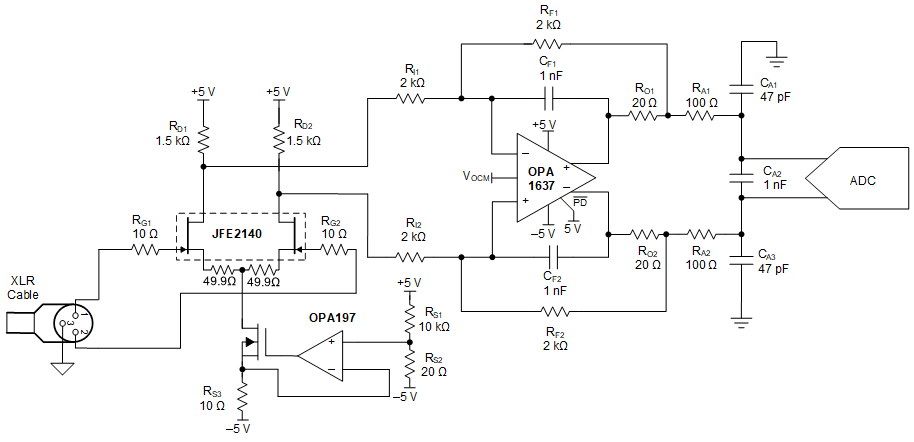ZHCSLE0B August 2021 – August 2023 JFE2140
PRODUCTION DATA
- 1
- 1 特性
- 2 应用
- 3 说明
- 4 Revision History
- 5 Pin Configuration and Functions
- 6 Specifications
- 7 Parameter Measurement Information
- 8 Detailed Description
- 9 Application and Implementation
- 10Device and Documentation Support
- 11Mechanical, Packaging, and Orderable Information
封装选项
机械数据 (封装 | 引脚)
散热焊盘机械数据 (封装 | 引脚)
- DSG|8
订购信息
9.2.2 Differential Front-End Design
Differential pair architectures are useful for differential small signal amplification where high common-mode voltage rejection (CMRR) is required. In typical differential amplifiers or fully-differential amplifiers (FDA), the tolerance of the resistors alone dominates the CMRR performance. In addition, these amplifiers cannot be configured with high input impedance because of the requirement of input resistors. When used on the front-end of an FDA, the precision-matching on the JFE2140 removes the requirement of extremely low resistor matching (< 1%) by creating a matched-input gain stage. In addition, high input impedance significantly reduces the effects of source impedance mismatch on CMRR performance, creating a differential input designed for noisy environments that are common in professional audio.
 Figure 9-10 The JFE2140 as a High Input
Impedance Front End for the OPA1637
Figure 9-10 The JFE2140 as a High Input
Impedance Front End for the OPA1637